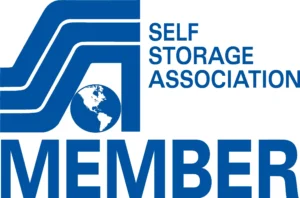Developed by Marie Kondo, this revolutionary approach to decluttering has transformed homes across the country, from Noida to Gurgaon and Delhi. The KonMari Method emphasizes joy and mindfulness in organizing spaces, making it an essential tool for anyone undergoing renovation, relocation, or simply seeking a more orderly home.
Whether you’re dealing with car storage, self-storage, or everyday household items, the KonMari Method offers a systematic, category-by-category approach to tidying up. By focusing on items that spark joy, you can create a living space that truly reflects your values and lifestyle. Embrace this method to transform your home into a serene, clutter-free sanctuary, enhancing both functionality and aesthetic appeal.
KonMari Decluttering Method – Category-by-Category
Clothes
Sorting Clothes by Category:
The first step in the KonMari Method is to tackle clothing by sorting them into categories such as tops, bottoms, dresses, outerwear, and accessories. This helps you see the full extent of your wardrobe, making it easier to make informed decisions about what to keep and what to discard.
The Importance of Holding Each Item to Assess Joy:
Marie Kondo emphasizes the importance of physically touching each item to assess whether it sparks joy. Hold each piece of clothing in your hands and pay attention to your emotional response. If an item brings you joy, it stays; if not, it’s time to let it go.
Discarding Items That Do Not Spark Joy:
Items that no longer bring joy or serve a purpose should be thanked for their service and then discarded or donated. This step is crucial in ensuring that your wardrobe consists only of items that you love and that make you feel good.
Books
Sorting Books by Category:
Just like with clothes, start by sorting your books into categories such as fiction, non-fiction, reference, and magazines. Lay them out so you can see everything you own. This visual overview helps in making more deliberate decisions.
Evaluating Each Book’s Emotional Value:
Hold each book and ask yourself if it brings you joy or serves a meaningful purpose in your life. Evaluate the emotional value of each book and consider whether it aligns with your current interests and aspirations.
Discarding Books That No Longer Bring Joy:
Books that no longer resonate with you or add value to your life should be respectfully discarded or donated. This step helps in creating a streamlined, joy-filled collection of books that truly reflect your interests.
Papers
Sorting Papers into Categories:
Papers can quickly accumulate and create clutter. Sort them into categories such as bills, receipts, important documents, and miscellaneous papers. This helps in organizing them more efficiently.
Importance of Decluttering and Organizing Paperwork:
Decluttering papers involves discarding those that are no longer needed, such as outdated bills and redundant documents. Organizing the remaining papers into clearly labeled folders or files ensures easy access and reduces future clutter.
Komono (Miscellaneous Items)
Komono includes a wide range of items like kitchenware, electronics, and toiletries. Organize these items by category and sub-category, making it easier to see what you have and what can be discarded.
The KonMari Approach to Evaluating Necessity and Joy:
As with clothes and books, hold each miscellaneous item and assess its necessity and joy. If an item is useful and brings joy, keep it. If not, it’s time to let it go. This ensures that even the smallest items in your home contribute to your overall happiness and functionality.
Sentimental Items
Sentimental items are often the hardest to declutter. Approach these items with care and gratitude, acknowledging the memories and emotions they hold. This makes it easier to decide their place in your life.
Storage and Organization Tips – KonMari Decluttering Method
Proper folding techniques for clothes and linens
One of the hallmarks of the KonMari Method is its unique folding technique. Marie Kondo advocates for folding clothes into small, rectangular shapes that can stand upright. This method not only saves space but also makes every item visible at a glance, preventing clothes from getting lost at the bottom of drawers.
To properly fold a shirt, lay it flat, fold in the sides to form a long rectangle, then fold the rectangle in half or thirds, ensuring it can stand upright in a drawer. The same technique applies to linens and towels, helping to keep closets and storage spaces neatly organized and easily accessible.
Maximizing storage space using KonMari principles
Maximizing storage space is a key aspect of the KonMari Method. The approach encourages the use of boxes and containers to compartmentalize items within drawers and shelves. This method keeps similar items together and makes it easier to find what you need. Marie Kondo recommends using clear containers or labeled boxes to store items so you can quickly identify their contents.
Additionally, vertical storage is emphasized to make the best use of space. By storing items vertically, you can see everything at a glance and access things without disturbing other items. This is particularly useful for car storage and self-storage units, where space optimization is crucial.
Organizing items for easy access and visibility
A fundamental principle of the KonMari Method is that every item should have its place, and that place should be easily accessible. This means organizing items in a way that they are visible and within reach. For example, in the kitchen, store frequently used items on lower shelves and less frequently used items higher up. Use drawer dividers to keep utensils and tools neatly arranged.
In closets, use hooks and hangers to keep accessories like belts and scarves visible and organized. This method not only saves time but also reduces stress by making it easy to find what you need when you need it.
Maintenance and Sustainability for KonMari Decluttering Method
Tips for maintaining a clutter-free home post-decluttering
Maintaining a clutter-free home after the initial decluttering process requires regular upkeep and mindful habits. One effective strategy is the “one in, one out” rule, which means that for every new item brought into the home, an old one should be discarded. This prevents accumulation and ensures that only items that bring joy remain. Keeping a designated spot for items that need to be donated or discarded can also help maintain a clutter-free environment.
B. Incorporating mindfulness and gratitude into daily routines
Take a moment to appreciate each item as you use it, acknowledging its purpose and the joy it brings. This practice fosters a deeper connection to your belongings and encourages mindful consumption. At the end of each day, spend a few minutes tidying up and expressing gratitude for the space you live in. This ritual not only keeps your home organized but also cultivates a sense of peace and contentment.
C. Sustainable practices in shopping and acquiring new items
Before making a purchase, consider whether the item will truly add value to your life and if it aligns with your needs and values. Opt for high-quality, durable items that will last longer and reduce the need for frequent replacements. When possible, choose second-hand or sustainably sourced products. By being mindful of your consumption habits and prioritizing sustainability, you can prevent clutter from accumulating and contribute to a more environmentally friendly lifestyle.
Conclusion for KonMari Decluttering Method
In conclusion, the KonMari Method offers a transformative approach to decluttering that can revolutionize your home. By focusing on what sparks joy and organizing items systematically, you can create a serene, functional living space. This method not only enhances your physical environment but also fosters mental clarity and peace. Embrace the principles of the KonMari Method to maintain a clutter-free home that reflects your values and brings lasting joy. Start your journey today and experience the profound benefits of a well-organized, harmonious home.
FAQs
A1: The KonMari Method is a decluttering approach developed by Marie Kondo. It focuses on keeping only items that “spark joy.”
A2: Begin by visualizing your ideal lifestyle. Then, declutter by category, starting with clothes and ending with sentimental items.
A3: Decluttering by category, rather than location, ensures a thorough process. It helps you see the total amount of items you own.
A4: “Spark joy” means an item should make you feel happy and positive. Keep only those items that elicit this feeling.
A5: Sentimental items should be tackled last. This allows you to build your decision-making skills on less emotional items first.
A6: Thank them for their service and let them go. Donate, recycle, or responsibly dispose of items that no longer serve you.
A7: Yes, it’s perfect for downsizing. It helps you identify what truly matters and lets go of unnecessary items efficiently.
A8: Ideally, the KonMari Method is a one-time event. After completing it, you maintain order by only keeping items that spark joy.
A9: Yes, it can be adapted to suit different lifestyles and preferences. The key is to focus on what sparks joy for you personally.
A10: Absolutely, the KonMari Method can be applied to any space. Declutter your car storage by keeping only necessary and joyful items.








